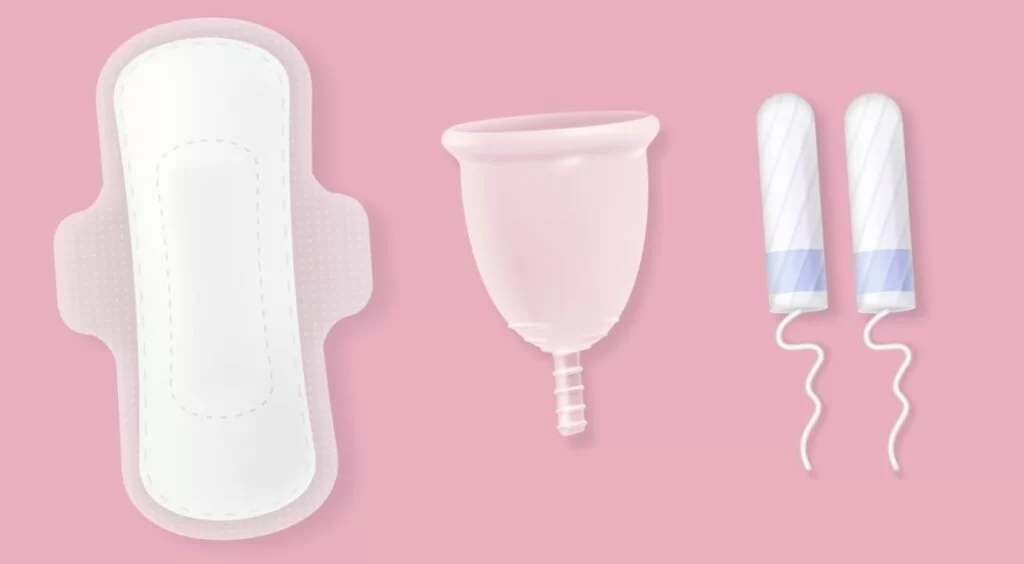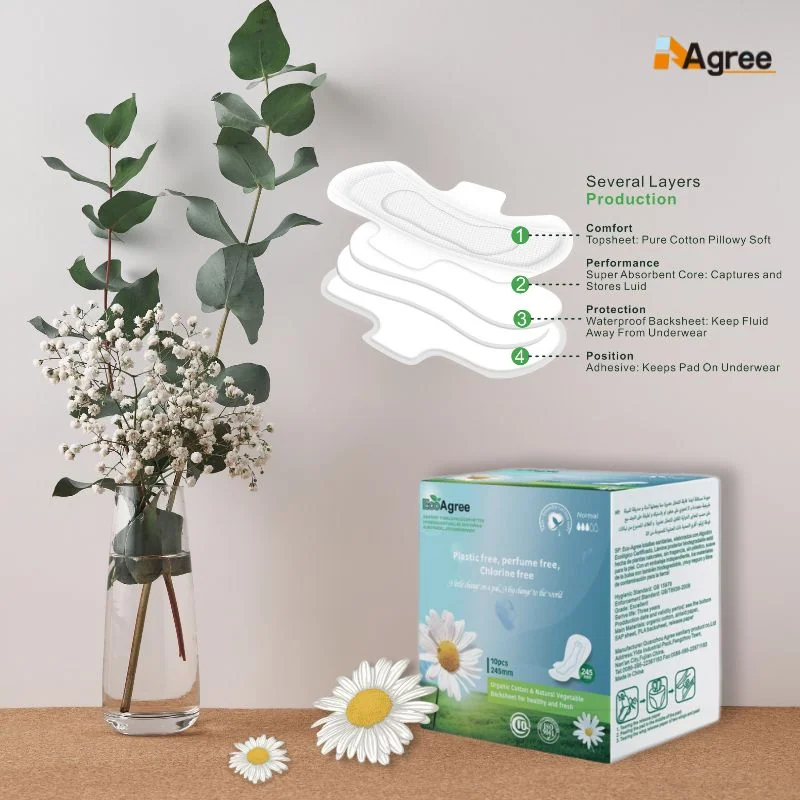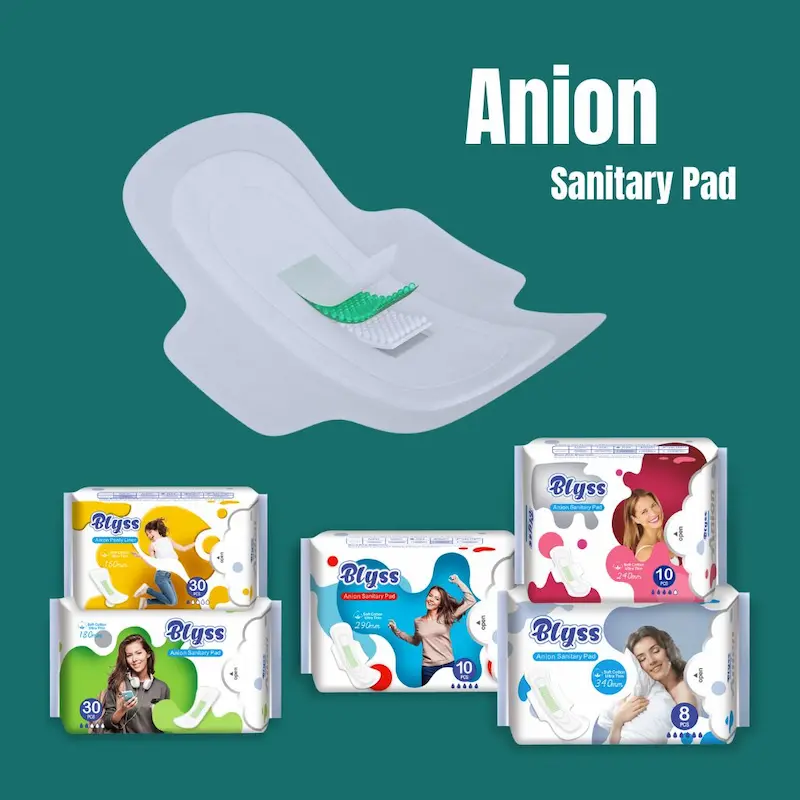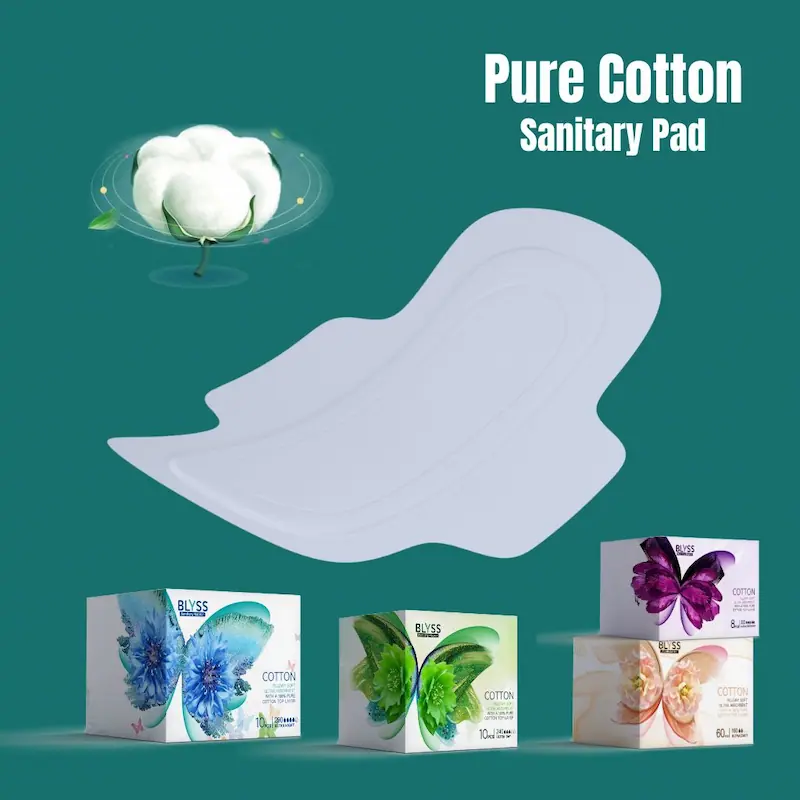1. Introduction
Menstrual hygiene is of utmost importance for women, and sanitary pads play a crucial role in ensuring comfort and cleanliness during menstruation. Throughout history, women have used various means to manage their periods, ranging from cloth to more modern disposable options.
2. What are Sanitary Pads?
Sanitary pads, also known as sanitary napkins or simply pads, are absorbent materials designed to be worn in the underwear during menstruation to absorb menstrual flow. They typically consist of a layer of absorbent material, an impermeable barrier to prevent leakage, and an adhesive strip to secure the pad in place.
Sanitary pads are commonly made with a combination of materials such as cotton, wood pulp, and superabsorbent polymers. These materials work together to provide comfort, absorbency, and odor control.
3. Evolution of Sanitary Pads
Sanitary pads have come a long way in terms of design and functionality. In ancient times, women used various types of cloth materials, such as folded linen or wool, as makeshift pads. These cloth pads were reusable but required frequent washing.
In the late 19th century, disposable pads made from wood pulp were introduced. These early pads were bulky and uncomfortable, but they offered a more convenient alternative to cloth pads. Over the years, advancements in technology and materials have led to the development of thinner and more absorbent pads, making them more comfortable and discreet to wear.
4. Types of Sanitary Pads
There are several types of sanitary pads available in the market to cater to different needs and preferences. Here are some common variations:
- Regular vs. ultra-thin: Regular pads are thicker and provide more absorbency, while ultra-thin pads are thinner and offer a more discreet feel.
- Winged vs. non-winged: Winged pads have flaps that fold over the sides of the underwear to provide additional leakage protection, while non-winged pads do not have these flaps.
- Organic vs. non-organic: Organic sanitary pads are made from natural and biodegradable materials, free from chemicals and synthetic additives. Non-organic pads may contain synthetic materials and chemicals.
It’s important to choose the type of sanitary pad that suits your flow, skin type, and activity level. Trying out different brands and types can help you find the one that works best for you.

5. Benefits of Using Sanitary Pads
Using sanitary pads offers several benefits:
- Convenience and ease of use: Sanitary pads are easy to use and can be changed as needed throughout the day.
- Health and hygiene benefits: Sanitary pads help absorb menstrual flow, preventing it from coming into contact with the skin and reducing the risk of infections.
- Odor control: Many sanitary pads come with odor-neutralizing properties, helping you feel fresh and confident during your period.
Sanitary pads provide a reliable and comfortable solution for managing menstruation.
6. How to Choose the Right Sanitary Pad
Choosing the right sanitary pad is essential for your comfort and protection. Consider the following factors when making your selection:
- Flow: Select a pad with the appropriate absorbency level for your flow. Lighter flow may require a thinner pad, while heavier flow may require a more absorbent pad.
- Skin type: If you have sensitive skin, opt for pads made from hypoallergenic materials to minimize the risk of irritation.
- Activity level: If you lead an active lifestyle or engage in sports, choose a pad that offers secure and comfortable protection during physical activities.
It’s important to try out different brands and types of sanitary pads to find the one that suits you best. Every woman’s needs and preferences are unique, so don’t hesitate to experiment until you find your perfect fit.
7. Environmental Impact
The environmental impact of disposable sanitary pads has raised concerns in recent years. These pads contribute to waste generation and take a long time to decompose in landfills. However, there are sustainable alternatives available:
- Reusable cloth pads: Cloth pads can be washed and reused, reducing waste and environmental impact.
- Menstrual cups: Menstrual cups are made from medical-grade silicone and can be reused for several years, significantly reducing waste.
- Organic and biodegradable pads: Some brands offer organic and biodegradable pads that are made from sustainable materials and break down more easily in the environment.
By choosing more sustainable options, you can reduce your environmental footprint while still maintaining good menstrual hygiene.
8. Common Concerns & Myths
There are several common concerns and myths surrounding the use of sanitary pads. Let’s address a few of them:
- Myth: Sanitary pads can cause infertility. Fact: There is no scientific evidence to support this claim. Sanitary pads are safe to use and do not affect fertility.
- Concern: Pads can cause rashes or irritation. Solution: Opt for pads made from hypoallergenic materials and change them regularly to maintain cleanliness and prevent irritation.
- Myth: Pads should not be worn overnight. Fact: There are pads specifically designed for overnight use that offer extra absorbency and leakage protection. It is safe to wear pads overnight.
It’s important to separate fact from fiction and address any concerns or myths you may have about sanitary pads. Consulting with a healthcare professional can provide further clarity and guidance.
9. Proper Usage and Disposal
Using sanitary pads correctly is essential for maintaining hygiene. Here’s a step-by-step guide:
- Wash your hands thoroughly before opening the pad.
- Remove the pad from its packaging and unfold it.
- Peel off the adhesive backing and press the pad firmly onto the crotch of your underwear.
- Adjust the pad to ensure it covers the necessary area and is secure.
- Change the pad every 4-6 hours or as needed to maintain cleanliness and prevent leakage.
When it comes to disposal, it’s important to be mindful of the environment. Wrap the used pad in toilet paper or the wrapper from a new pad and dispose of it in a designated bin. Avoid flushing pads down the toilet, as they can cause plumbing issues.
10. Alternatives to Sanitary Pads
While sanitary pads are a popular choice, there are other menstrual hygiene products available:
- Menstrual cups: These reusable silicone cups collect menstrual flow and can be emptied and rinsed throughout the day.
- Tampons: Tampons are inserted into the vagina to absorb menstrual flow. They come in various sizes and absorbencies.
- Period underwear: These specially designed underwear have built-in absorbent layers to replace the need for pads or tampons.
Each alternative has its own benefits and considerations, so it’s important to explore and find the option that suits you best.

11. Brands and Market Leaders
The market for sanitary pads is vast, with numerous brands offering a wide range of options. Some popular brands include Joyday, Blyss, Joygirl, Joystar, and Mecilady. Each brand has its own unique features and product offerings, catering to different needs and preferences.
Joyday, for example, offers a variety of sanitary pads, including panty liners, day use pads, night use pads, and overnight pads. Blyss specializes in organic sanitary pads made from natural and biodegradable materials. Joygirl offers 10+5 panty liners for added convenience, while Joystar provides a pack of 9 pads for regular use. Mecilady stands out with its embossed sanitary pads, offering a unique texture for enhanced comfort.

12. Cost and Affordability
The cost of sanitary pads can vary depending on the brand, type, and quantity. Generally, regular pads are more affordable compared to ultra-thin or organic pads. It’s important to consider your budget and find a balance between cost and quality.
To save money on sanitary pads, consider buying in bulk or taking advantage of discounts and promotions. Some brands also offer subscription services, ensuring you have a regular supply of pads delivered to your doorstep.
13. Organic Sanitary Pads
Organic sanitary pads have gained popularity among those seeking more sustainable and eco-friendly options. These pads are made from natural and biodegradable materials, free from chemicals and synthetic additives. They offer the same level of comfort and protection as non-organic pads while reducing environmental impact.
Some top organic sanitary pad brands include Blyss, which offers a range of organic pads made with certified organic cotton and plant-based materials. These pads are free from chlorine, dyes, and fragrances, making them gentle on the skin and the environment.

14. DIY Sanitary Pads
For those who prefer a more hands-on approach, making your own sanitary pads at home is an option. DIY pads can be made using soft, absorbent fabrics such as cotton or bamboo. There are various patterns and tutorials available online that provide step-by-step instructions for creating reusable cloth pads.
However, it’s important to note that DIY pads may not offer the same level of absorbency or leakage protection as commercially available pads. They require proper cleaning and maintenance to ensure hygiene and effectiveness.
15. Sanitary Pads Around the World
Menstrual hygiene practices vary across cultures and countries. In some parts of the world, access to sanitary pads is limited, leading to unhygienic practices and potential health risks. Organizations and initiatives are working towards improving menstrual hygiene management globally, ensuring that women have access to safe and affordable menstrual products.
In developed countries, sanitary pads are widely available and accessible. However, there is still a need to address issues such as period poverty and stigma surrounding menstruation.
16. Frequently Asked Questions
Here are some common questions about sanitary pads:
- How often should I change my pad? It is recommended to change your pad every 4-6 hours or as needed to maintain cleanliness and prevent leakage.
- Can I wear a pad while swimming? There are specially designed pads available for swimming that are water-resistant and offer leakage protection.
- Can I wear a pad during exercise? Yes, pads can be worn during exercise. Look for pads that offer secure and comfortable protection during physical activities.
If you have any specific concerns or questions, it’s best to consult with a healthcare professional for personalized advice.
17. Expert Opinions
Gynecologists and health experts emphasize the importance of proper menstrual hygiene and the use of sanitary pads. They recommend choosing pads that provide adequate absorbency and comfort, and changing them regularly to maintain cleanliness. It’s also important to address any skin irritation or discomfort promptly to prevent further complications.
Consulting with a healthcare professional can provide valuable insights and guidance on selecting the right sanitary pad for your needs.
18. Personal Stories
Real-life experiences of women using sanitary pads can provide valuable insights and relatability. Many women have shared their stories about finding the right pad, dealing with leaks, or navigating through different brands and types. These personal stories can offer reassurance, tips, and a sense of community for those going through similar experiences.
19. Future of Sanitary Pads
The future of sanitary pads is continuously evolving with advancements in technology and growing awareness of sustainability. Some trends to watch out for include:
- Innovations in materials: Manufacturers are exploring new materials that offer improved absorbency, comfort, and eco-friendliness.
- Biodegradable options: More brands are focusing on creating biodegradable pads that break down more easily in the environment.
- Smart technology: There is potential for the integration of smart technology into sanitary pads, such as sensors that can monitor menstrual flow or track menstrual health.
As the conversation around menstrual hygiene and sustainability continues to grow, we can expect to see further advancements and improvements in the design and functionality of sanitary pads.
20. Conclusion
Sanitary pads play a vital role in menstrual hygiene, providing comfort, absorbency, and convenience during menstruation. With a wide range of options available in the market, it’s important to choose the right type of pad that suits your needs and preferences.
Consider factors such as flow, skin type, and activity level when selecting a sanitary pad. Don’t be afraid to try different brands and types until you find the one that works best for you.
Additionally, be mindful of the environmental impact of disposable pads and explore sustainable alternatives such as reusable cloth pads, menstrual cups, or organic and biodegradable pads.
By making informed choices and prioritizing your menstrual hygiene, you can ensure a comfortable and healthy period experience.
21. Resources and Further Reading
For more information on sanitary pads and menstrual hygiene, here are some recommended resources:
- Book: “Period Power: A Manifesto for the Menstrual Movement” by Nadya Okamoto
- Website: Menstrual Hygiene Day (www.menstrualhygieneday.org),(http://ppdiaper.com)
- Article: “The Environmental Impact of Disposable Menstrual Products” by Women’s Environmental Network
Remember, everyone’s experience with menstrual hygiene is unique, so it’s important to find what works best for you. Stay informed, take care of yourself, and embrace your period with confidence.




